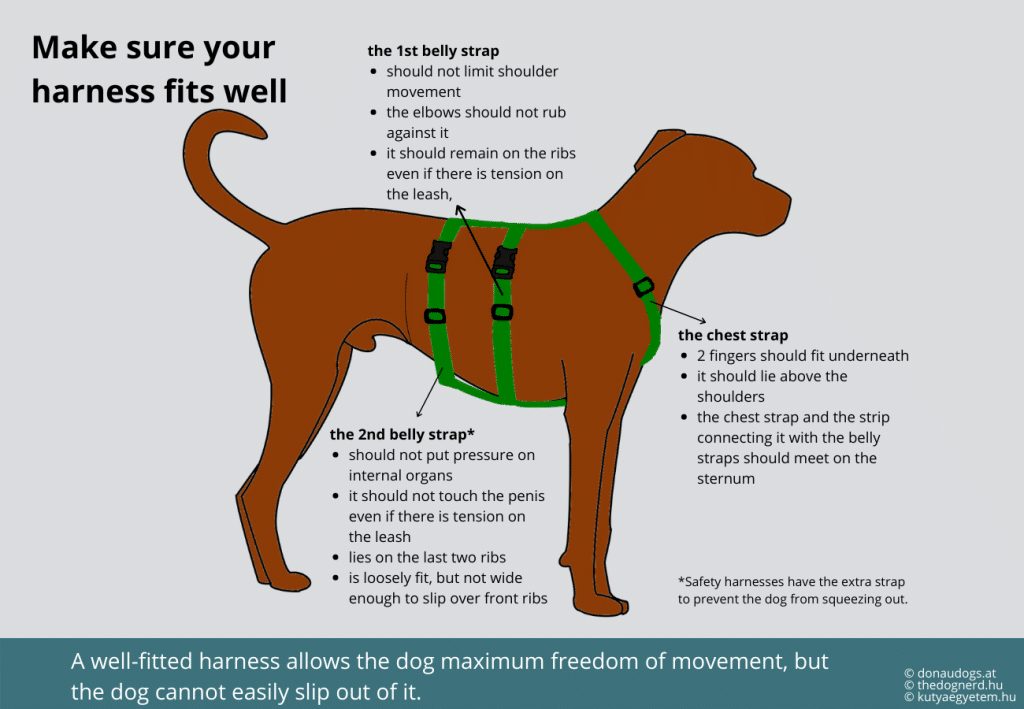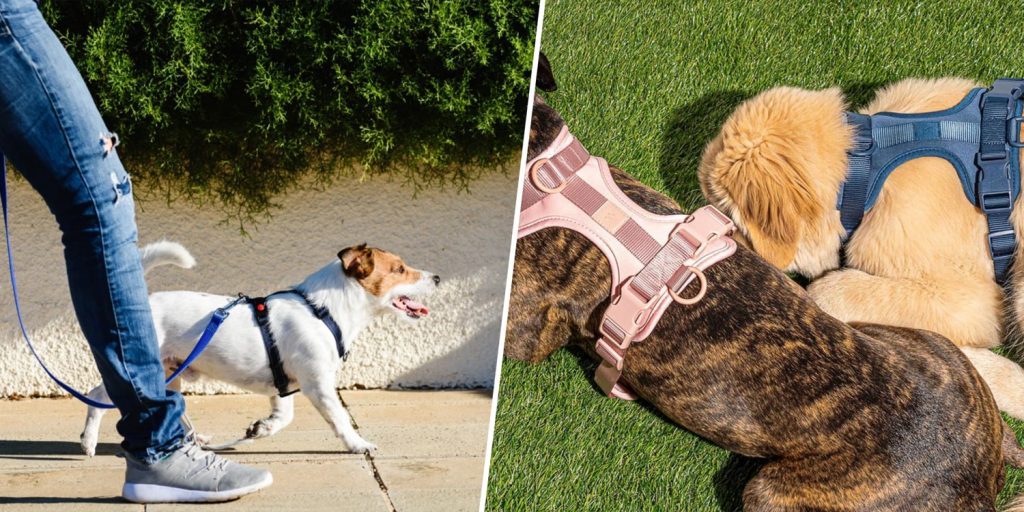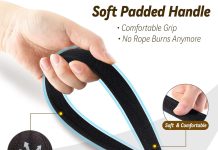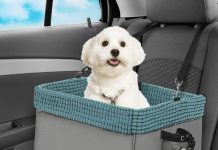Attention all dog owners! Are you searching for the safest harness for your beloved furry friend? Look no further!
This article will explore the various types of dog harnesses available and determine which provides the utmost safety for your canine companion.
From traditional back-clip harnesses to front-clip and head halters, we will weigh the pros and cons of each option, guiding you toward the perfect choice for your precious pup.
Say goodbye to worries and discomfort, and say hello to a secure and enjoyable walking experience for you and your furry friend!
What Is The Safest Type Of Harness For A Dog?
Table of Contents
1. Introduction to dog harnesses
When walking our furry friends, it’s essential to prioritize their safety and comfort. While traditional collars might be the go-to option for many dog owners, harnesses offer a safer and more secure alternative.
Dog harnesses are designed to distribute the pressure evenly across the dog’s body, reducing the risk of injury to the neck and throat. In this article, we will explore the various types of harnesses available and guide you in choosing the safest option for your beloved canine companion.
2. Benefits of using a harness
Using a dog harness has several advantages over traditional collars. Firstly, harnesses prevent strain on the dog’s neck and throat, which can occur when they pull on a leash.
This is particularly important for dogs with respiratory issues, such as brachycephalic breeds. Additionally, harnesses provide better control and discourage pulling behavior, making walks more enjoyable for dogs and their owners.
3. Factors to consider when choosing a safe dog harness
Before diving into the different types of dog harnesses, it’s essential to consider a few critical factors to choose the safest option for your dog.
The size and breed of your dog play a significant role in determining which harness is suitable, as well as any specific health or behavioral concerns your dog may have. It’s also crucial to consider the durability and quality of materials used in the harness and any additional safety features.
4. Types of dog harnesses available
Several types of dog harnesses are available, each offering unique benefits and features. Understanding their differences and functionalities is essential to make an informed decision.
Some standard dog harnesses include front-clip, back-clip, step-in, vest, and head-halter harnesses. Let’s explore each of these options in more detail.
5. Front-clip harnesses
Front-clip harnesses have a leash attachment point at the front of the dog’s chest. This design helps redirect a dog’s pulling behavior, as the force is directed sideways instead of forward.
Front-clip harnesses are often recommended for dogs who pull excessively or exhibit reactive behavior. The even pressure distribution across the dog’s chest makes it a safe and effective option.
6. Back-clip harnesses
As the name suggests, back-clip harnesses have the leash attachment point on the dog’s back. This type of harness is often the most straightforward and user-friendly option, making it suitable for dogs who walk nicely on a leash.
However, back-clip harnesses may not be the safest choice for solid pullers, as the design does not effectively deter pulling behaviors.
7. Step-in harnesses
Step-in harnesses are designed to be easily put on by having the dog step into the harness and fasten it around its body. They generally feature adjustable straps and buckles for a secure fit.
Step-in harnesses are known for their simplicity and are particularly convenient for dogs who may not enjoy having things put over their head. However, they may not be the best choice for escape artists dogs, as the fit around the body may be less secure.
8. Vest harnesses
Vest harnesses, also known as full-coverage harnesses, provide extra support and coverage for dogs. These harnesses typically have a more comprehensive design and wrap around the dog’s chest and body more securely. Vest harnesses are often recommended for dogs with respiratory issues, seniors, and those recovering from injuries. The added support and coverage make these harnesses a safe and comfortable option for dogs needing extra stability.
9. Head halter harnesses
Head halter harnesses work similarly to a horse’s halter, with a strap over the dog’s snout. This type of harness gives the owner more control over the dog’s head movements and can help manage pulling behaviors.
However, head halter harnesses may take some time for dogs to get used to, and there is a potential for discomfort if not fitted properly. Following the manufacturer’s instructions and consulting with a professional if considering a head halter harness is essential.
10. Safety features to look for in a dog harness
When choosing a dog harness, it’s crucial to look for certain safety features to ensure the well-being of your furry friend. Firstly, opt for a harness with solid, durable materials that can withstand pulling and sudden movements.
đAdjustable straps and buckles are essential for achieving a secure and comfortable fit. Reflective components or stitching are also valuable additions, as they enhance visibility during low-light conditions, ensuring your dog’s safety during nighttime walks.
11. Size and fit considerations for a safe dog harness
Finding the right size and fit for your dog’s harness is essential for their safety and comfort. Measure your dog’s chest circumference and refer to the manufacturer’s sizing chart to determine the appropriate size.
It’s essential to ensure that the harness fits snugly but not too tight, allowing for a full range of motion without chafing or rubbing. Regularly check the fit of the harness as your dog grows or gains/loses weight to avoid any discomfort or potential escape.
12. How to properly harness your dog
Properly harnessing your dog is crucial for their safety. Begin by familiarizing your dog with the harness, allowing them to sniff and investigate it before putting it on. Put the harness over their head or have them step into it, depending on the style.
Fasten the buckles and adjust the straps to achieve a secure fit, ensuring you can fit two fingers comfortably between the harness and your dog’s body. Please take a few moments to praise and reward your dog for their cooperation in creating positive associations with the harness.
13. Common mistakes to avoid when using a dog harness
While dog harnesses offer numerous benefits, there are some common mistakes to avoid to ensure your dog’s safety. One common mistake is using the wrong size harness, which can lead to discomfort or escape. Another mistake is using a damaged or worn-out harness, compromising its effectiveness. It’s also essential to avoid leaving the harness on your dog for extended periods, as this may cause chafing or skin irritation. Lastly, never attach the leash to the collar when using a harness, as this can cause strain on the neck and negate the benefits of wearing a harness.
14. Frequently asked questions about dog harnesses
Q: Can I use a harness on a miniature or toy-breed dog?
Absolutely! Harnesses are designed explicitly for smaller breeds, ensuring their safety and comfort. Look for harnesses with narrower straps and smaller buckles, catering to their delicate physique.
Q: Can a dog harness help with leash pulling?
Yes, certain types of harnesses, such as front-clip harnesses, effectively manage leash-pulling behavior. They redirect the pulling force and can make walks more enjoyable for both the dog and the owner.
Q: Can a dog slip out of a harness?
While it’s not common, a dog may be slipping out of a poorly fitted or loose harness. This is why it’s crucial to regularly check the fit and ensure the harness is tightened appropriately.
15. Conclusion
When it comes to the safety and well-being of our four-legged friends, choosing the correct harness is a crucial consideration. By understanding the different types of harnesses available, considering the specific needs of your dog, and implementing proper usage and fitting techniques, you can ensure a safe and comfortable walking experience.
Remember, each dog is unique, and what works for one may not work for another. Take the time to find the safest harness that best suits your dog’s needs, and enjoy countless enjoyable walks together.



































